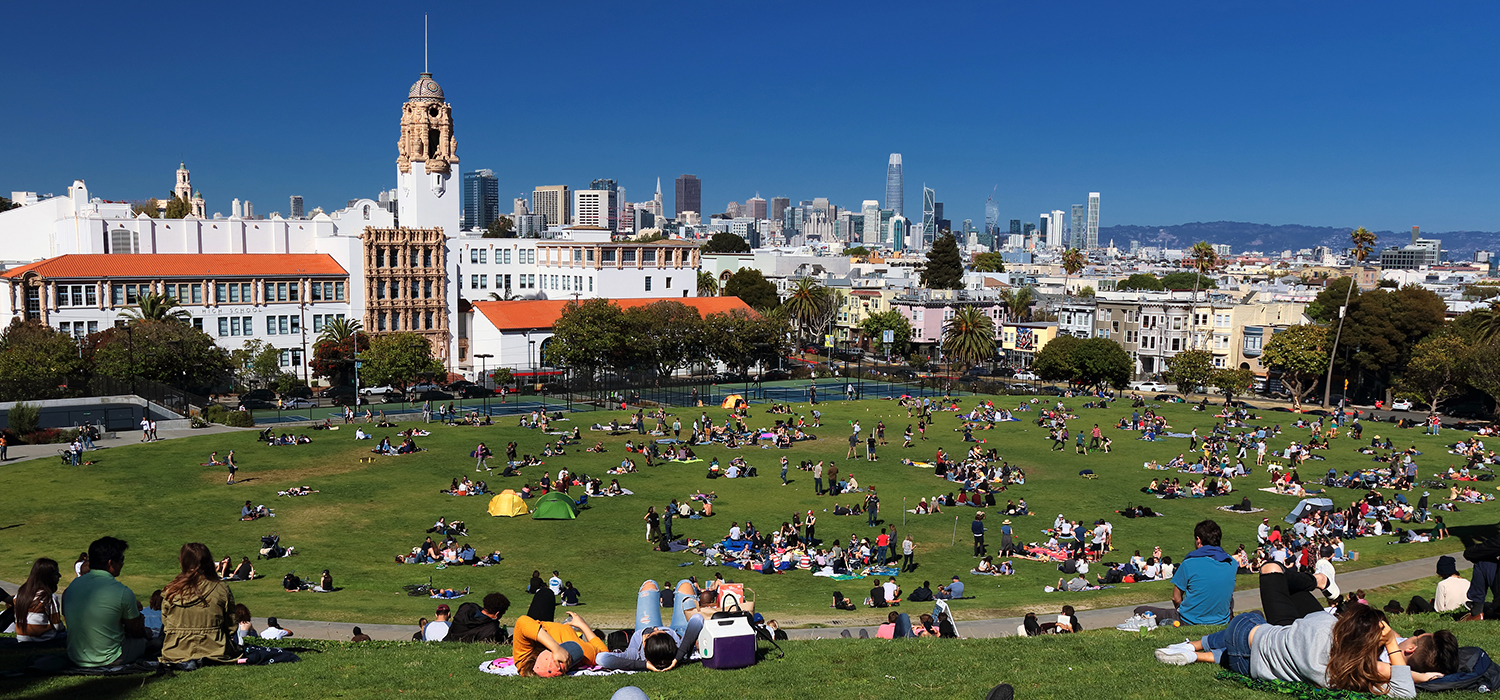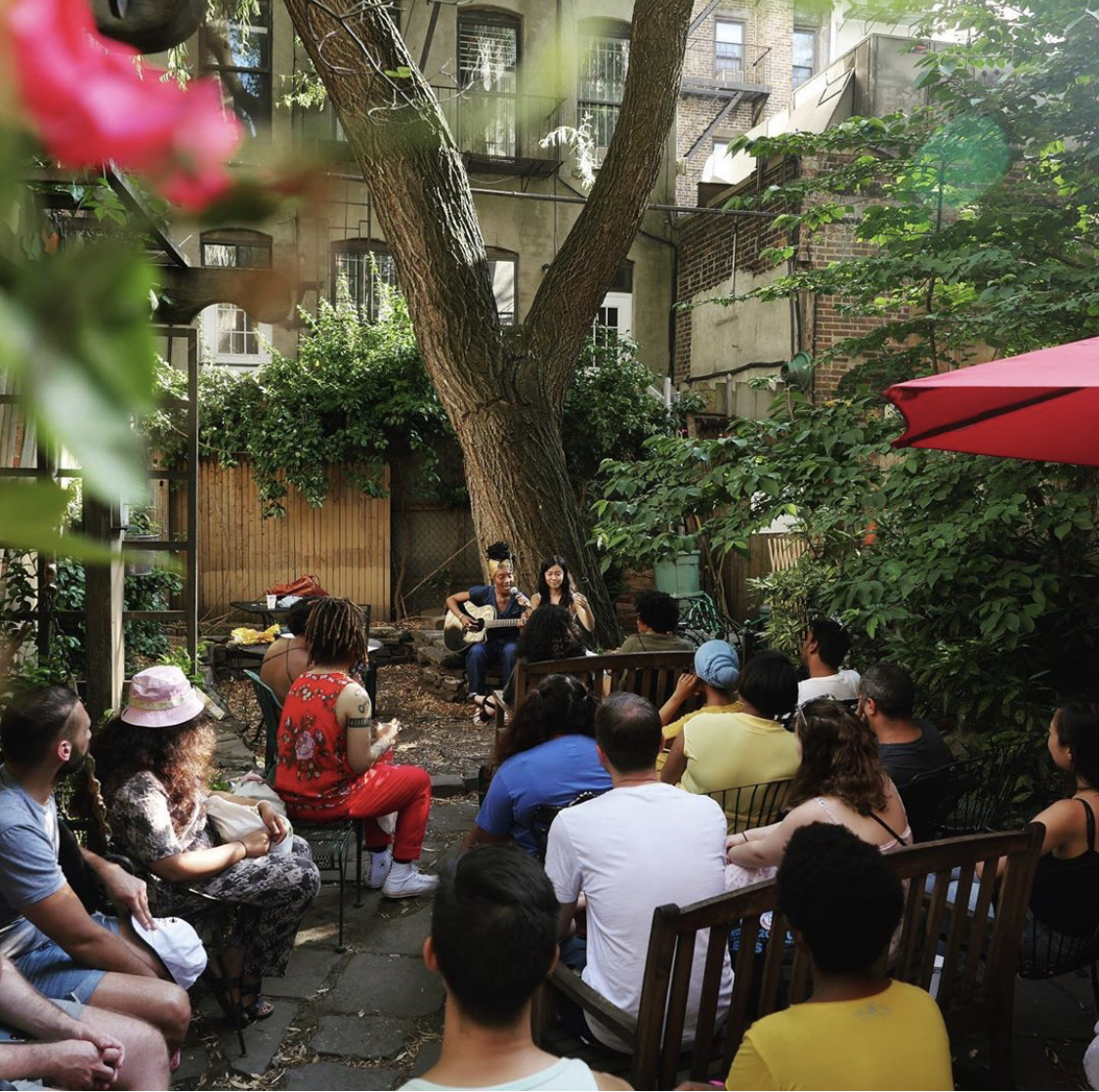
<p>Header image of <a href="https://flickr.com/photos/jnc/45302468902/in/photolist-2c2dZG3-21s37qq-…; target="_blank">San Francisco</a> by simplethrill on Flickr is licensed under CC 2.0, cropped from the original.</p>
<div> </div>
Parks and green spaces can tremendously benefit a community. But if parks aren’t designed and activated with residents’ interests in mind, they can go underutilized, or the opposite—they can increase property values and price long-time residents out of the neighborhood.
When the community is involved in planning and decisionmaking processes, park amenities can better mirror the community’s priorities.
Last month, the DC-based nonprofit Casey Trees held their annual Green Cities Summit, uniting arborists, urban planners, environmental advocates, and community groups in discussions around improving our green spaces. Based on my presentation at the summit, I outline three strategies to support inclusive park development—and three examples of these strategies in action:
1. Giving the community ownership: “Pocket parks” in New York City’s Lower East Side
Parks and recreation departments often have limited capacity to address the development, operations, and maintenance of parks. Considering these fiscal constraints, community residents have an opportunity to be more involved in the park planning process.
The network of “pocket parks” in Alphabet City in New York’s Lower East Side offers an example of this opportunity. In the 1970s, economic recession led owners to abandon their properties, leaving vacant lots, piles of trash and rubble, and a forgotten neighborhood.

A poetry reading by Cat Wei in the Creative Little Garden in New York City's Lower East Side. Image via the Creative Little Garden on Instagram.
Mostly Black and Latinx immigrants lived in the neighborhood at the time, and they saw the need to revitalize the vacant lots to create space for their families and heritage. The city government allowed residents to take ownership of the abandoned lots, and they reimagined the space.
Each park has a different use that reflects the priorities of the residents living on that block.
For instance, La Plaza Cultural de Armando Perez was revitalized by a group of Latinx residents who wanted to create a community garden and open green space to represent their Latin American heritage. The Creative Little Garden was redeveloped to include something for everyone, such as benches and quiet space, play areas, and water features.
The residents took ownership of the parks, meaning they are in charge of upkeep and determining the parks’ use, but the city government has oversight to ensure the spaces are not underutilized. The parks mirror the community because the residents are driving the design process.
2. Seeking community feedback: DC’s 11th Street Bridge Park
Washington, DC’s 11th Street Bridge Park seeks to close the physical divide formed by the Anacostia River, along with the socioeconomic and racial divides between the neighborhoods of Capitol Hill and Anacostia.
For example, the child poverty rate in Capitol Hill is 20 percent, and in Anacostia, it’s more than double that. Capitol Hill has a 7 percent unemployment rate, while Anacostia’s is more than 20 percent.
The park has not yet been built, but stakeholders led by Building Bridges Across the River (BBAR) have taken an equitable development approach to ensure residents are not displaced. An oversight committee of residents and neighborhood business owners helped choose the winning design for the park, suggested programming ideas, and vetted the recommendations for equitable development.

A rendering of the 11th Street Bridge Park. Image courtesy of OMA+OLIN.
As a result of these discussions, BBAR and City First Enterprises formed the Douglass Community Land Trust, demonstrating how residents have helped shape both the park development and the development of the surrounding areas.
3. Offering equitable programming: San Francisco parks
After a park is developed, the activities and features of the park can encourage or discourage community use, so it’s important to ensure programming is accessible, culturally appropriate, and something desired by residents.
Like many parks around the country, San Francisco’s Recreation and Parks Department generates a quarter of its revenue from programming such as fitness classes, festivals, and space retail.

The Hardly Strictly Bluegrass Festival in San Francisco's Golden Gate Park. Hardly Strictly Crowd by Jesse Wagstaff is licensed under CC 2.0.
Some residents are unable to afford these activities, so the department offers scholarships for low-income households that cover between 50 and 100 percent of recreation program fees. They also have a partnership with the Human Services Agency of San Francisco to communicate to families living in public housing about the city’s summer camps, enabling them to register early and at a discounted rate or free of charge.
How to get these strategies to stick
Community priorities have shaped park development in many ways, and partnerships between government and communities can come in many forms.
For these kinds of partnerships to work, the community must have capacity to manage and maintain parks. Most capital for developing a park comes from traditional government mechanisms, such as tax credits and bonds. Communities typically can’t produce this level of funding, so a strong partnership between the government and the community is vital.
Strategies for residents to get more involved should not be an excuse for government to step out of the way, but rather to collaborate to ensure the parks and green spaces are benefiting everyone.
Finally, participatory processes take time. They require significant engagement, buy-in from government leaders, community campaigning, and goal setting, all before breaking ground. But these efforts are worth it when people can access parks and their great benefits.
Let’s build a future where everyone, everywhere has the opportunity and power to thrive
Urban is more determined than ever to partner with changemakers to unlock opportunities that give people across the country a fair shot at reaching their fullest potential. Invest in Urban to power this type of work.